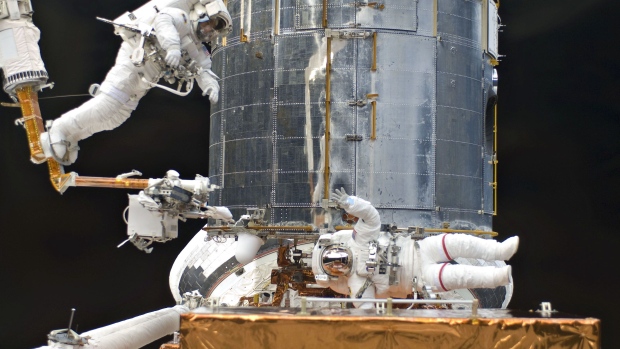
Massive Webb telescope may see close to the beginning of time
BNN Bloomberg
Set to launch Christmas Day and peer back 13.5 billion years, the successor to Hubble could help answer some of humanity’s biggest questions.
The largest, most expensive and most sophisticated space telescope ever made is scheduled to lift off Dec. 25 from the north coast of South America. At its eventual orbital station 932,000 miles from Earth, the James Webb Space Telescope might just see to the beginning of time.
The farther one looks in space, the further back in time one goes. When Webb begins its work in mid-2022, it will help scientists study some of the earliest light in the universe and to peer more closely at planets in other galaxies. More than 30 years after NASA launched the Hubble Space Telescope, its much bigger successor is designed to see through the most ancient mists of deep space.
The almost US$11 billion telescope, more than two decades in the making, is a National Aeronautics and Space Administration collaboration with the European and Canadian space agencies. It’s currently scheduled to launch early on Dec. 25 from the European Space Agency’s South American spaceport in French Guiana aboard an Ariane 5 rocket.
For science, the Webb telescope’s ultimate promise is a greater understanding around two fundamental questions for humanity: Where did we come from and are we alone? But for NASA, it’s also a huge risk given everything that might go wrong.
The telescope is “a shining example of what we can accomplish when we dream big,” NASA Administrator Bill Nelson said Dec. 21 at a pre-launch briefing, calling it “one of the great engineering feats for the people of this planet.”
The Webb telescope will examine the infrared spectrum—thermal radiation humans can’t see and which is often obscured to ground-based telescopes. Hubble is still working, albeit from an orbit much closer to Earth (340 miles away), collecting data in the visible light spectrum. The older telescope, which had to be repaired after launch because of a flaw in its mirror, has been repeatedly updated with new technology and could last another two decades.





















 Run 3 Space | Play Space Running Game
Run 3 Space | Play Space Running Game Traffic Jam 3D | Online Racing Game
Traffic Jam 3D | Online Racing Game Duck Hunt | Play Old Classic Game
Duck Hunt | Play Old Classic Game